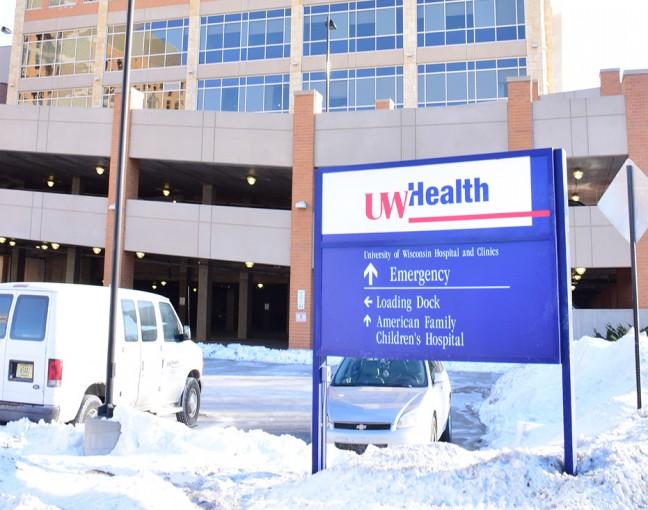University of Wisconsin Hospital nurses held a conference mid-December demanding recognition of their union SEIU Healthcare Wisconsin. This conference culminates a five-year fight for representation, following the union’s expiration under former Republican Gov. Scott Walker.
Nurses cited their difficult working conditions, including a perpetual cycle of nurse turnover so high it affects their ability to treat patients. This is not surprising, as nurses are often considered the unsung heroes of the healthcare industry, the very backbone of hospitals including the UW Hospital. It seems only fair for them to take action for more reasonable working conditions.
In this regard, forming a labor union seems more than justifiable. Nurses in unions are paid 20% higher than their non-unionized counterparts, report higher job satisfaction and are able to provide a voice for themselves and, in turn, their patients.
As such, the increase in unions within the healthcare industry despite the overall decrease of unions in the workforce is a step in the right direction; 20.4% of nurses are in a union, a significant increase as compared to the 10.5% national average for wage and salary workers as a whole. As unions become more commonplace, the spread of unions would enable workers to gain better working conditions and collective representation against powerful corporate interests.
Unfortunately, labor unions are a little more complex than they initially seem, especially in the health industry. When patients are factored into the equation, the effectiveness of labor unions becomes murky.
Various research studies have reported marginal increases in patient outcomes in terms of hospital-acquired infections following nurse unionization. They conclude the establishment of unions as the reason behind the rate of patient improvement. Other studies have demonstrated a lower prevalence of heart attacks in unionized hospitals. In terms of Wisconsin legislation, standardizing nurse-to-patient ratios would enable safer conditions for both nurses and patients and prevent nurses from being over-worked.
Conversely, when nurses go on strike patients’ conditions rapidly deteriorate. A 2012 study on the impact of nurse strikes in New York recorded an 18.3% increase in patient mortality and 5.7% increase in 30-day readmission for patients admitted during the strike. It is evident nurse strikes wind up providing worse quality of care for patients at affected hospitals.
This also raises an ethical dilemma for nurses who walk out on their patients, leaving behind replacement nurses who do not know the intimate details of their patients’ ailments. Replacement nurses themselves serve as an additional issue within nurse strikes, as they are often not trained enough for the positions they are meant to fill.
A real-world example of the effects of nurse strikes comes from the Allina Health strikes. Over a six week period in 2016, nurses demonstrated a strike after Allina proposed transferring nurses from union-backed health insurance to corporate health insurance.
While there is no recorded data on the lasting effects on patients during the six-week strike, there had been a reported case in a similar Allina strike of a replacement nurse placing an IV filled with adrenaline to an asthmatic patient, resulting in them having to receive treatment in the Intensive Care Unit.
Due to similar mishaps and hospital complications, the 2016 Allina Health nursing strikes resulted in a cumulative $149 million in damages. Smaller hospitals have had to shut down as a result of nurse strikes.
It is clear nurse strikes are detrimental to patients and hospitals overall, however, can it really be blamed on labor unions?
In almost all cases of nurse strikes, hospitals were given ample time to find replacement nurses, therefore, nurses are not to blame for patient complications. But the consequences of unions initiating a strike sheds light on unions’ at-times insidious intentions.
There is no single union representing all nurses — this is why the recognition of SEIU Healthcare Wisconsin is important for UW nurses. Many of these are unions are not represented by nurses themselves, effectively counteracting the purpose of unions. Instead, they are lead by labor lawyers who oftentimes are more interested in union membership dues nurses bring in. These can be up to $90 a month, making unions a lucrative business.
Profit-hungry labor unions may initiate strikes or other drastic actions on the basis of nurse and patient care improvement, but this may actually harm both. Strikes often result in permanent financial damage to hospitals which then lay off nurses they no longer can afford. Fewer nurses mean less care for incoming patients, resulting in an overall deterioration in medical care.
This vicious cycle shows the harmful impact a corrupt labor union can have. But the UW nurse unionization does not necessarily have to be this way. If both UW Hospital management and the nurse labor union remain checked by one another, this can be a path to a new future for medicine at UW.
Samiha Bhushan (bhushan3@badgerherald.com) is a freshman studying neurobiology and English literature.


